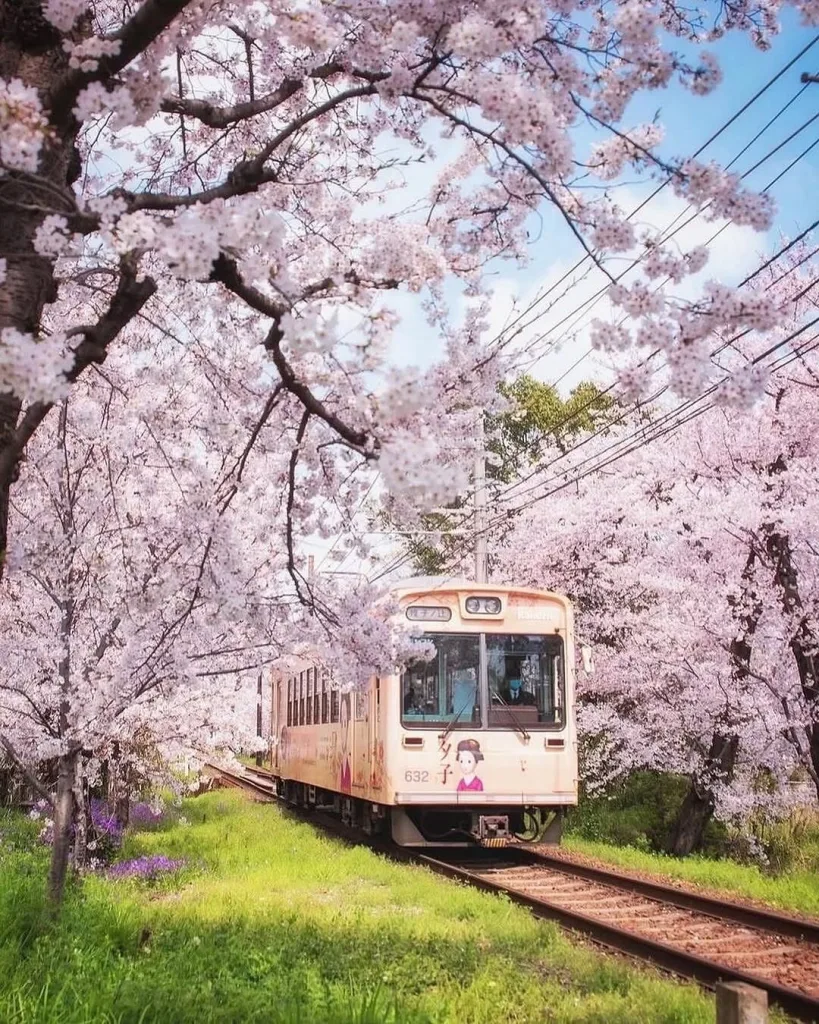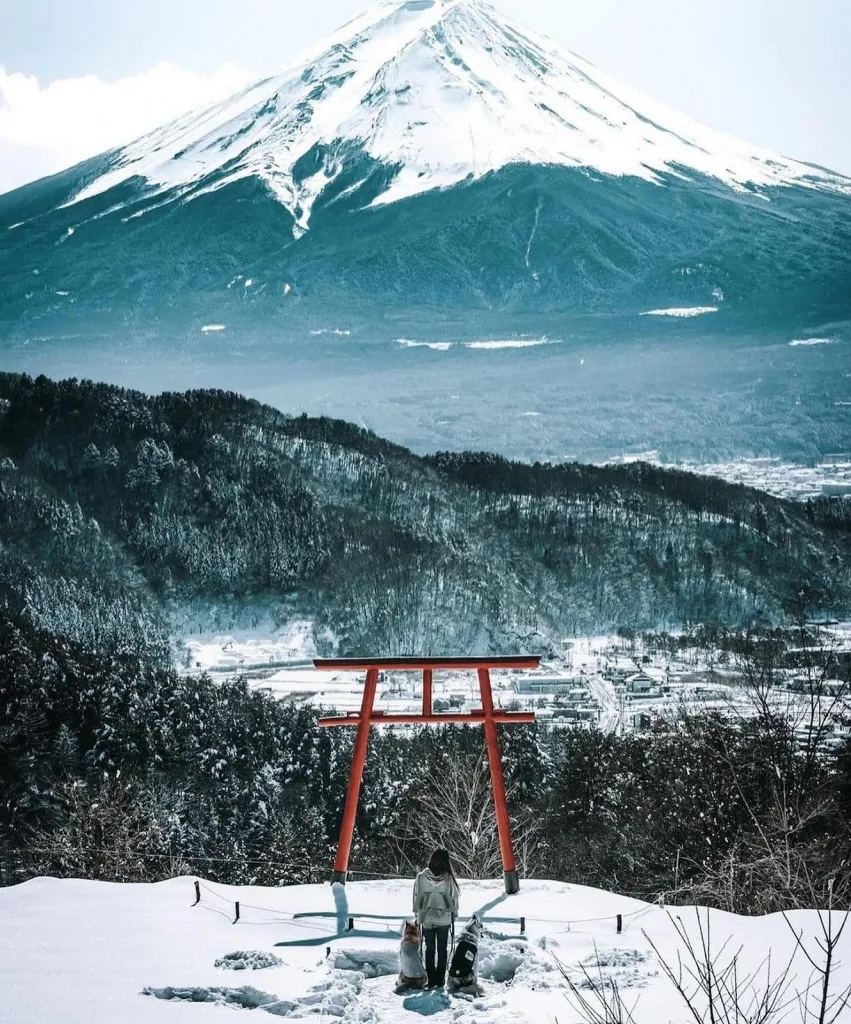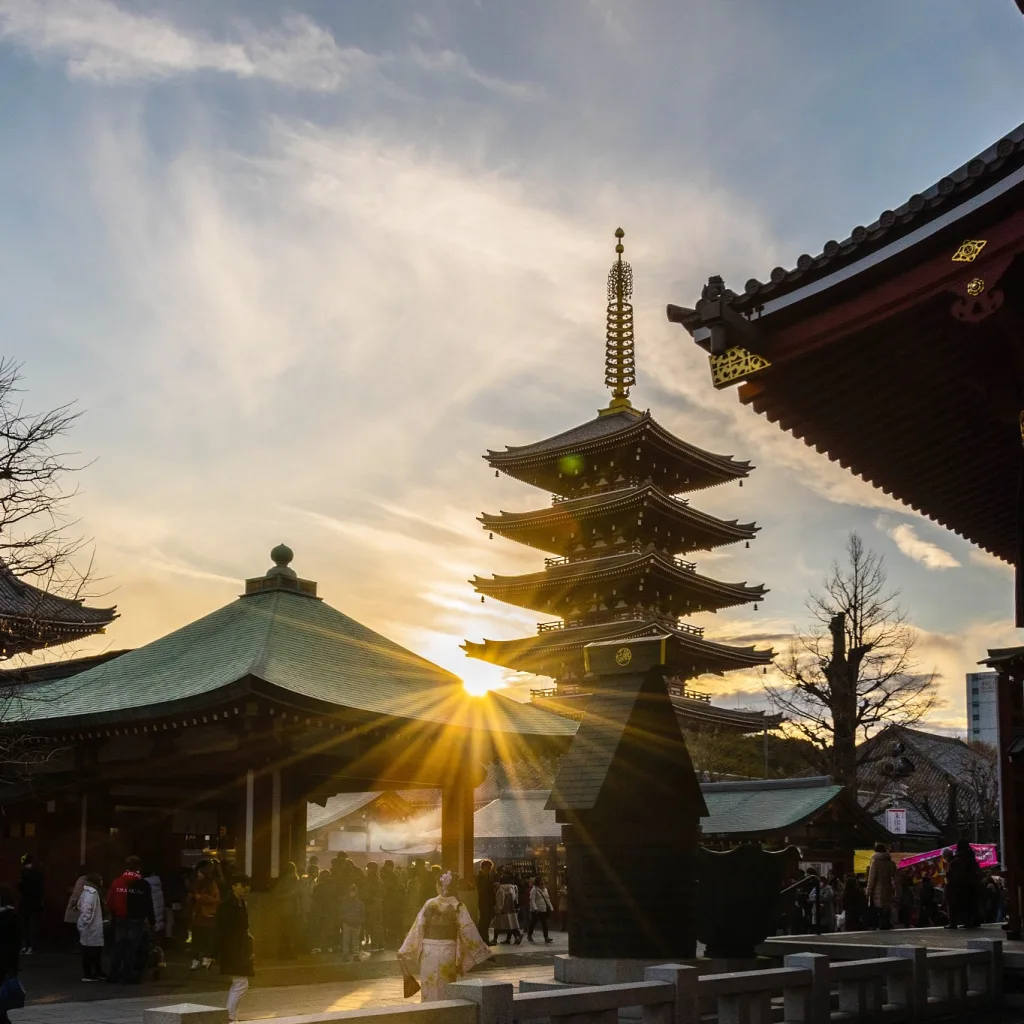Best Time to Visit Japan: Seasonal Travel Guide 2025
“Discover the best time to visit Japan with our seasonal travel guide. Explore cherry blossoms, fall foliage, festivals, and tips to plan your perfect trip.”
So, you’re planning a trip to Japan and wondering: “When’s the best time to go?” Trust me, I’ve been there. I remember sitting with multiple browser tabs open, comparing cherry blossom forecasts, weather charts, and endless travel blogs, trying to figure out the perfect season.
Japan is a year-round destination, but each season offers something magical—so much so that choosing just one “best time” feels almost impossible.
That’s where I come in 😉. I’ve explored Japan in different seasons, from watching delicate sakura petals dance through the air in spring to soaking in steaming onsen while snowflakes fell around me in winter. Let’s break it all down so you can confidently plan your adventure.

Seasons in Japan at a Glance
Before diving deep, let’s get the basics straight. Japan has four distinct seasons—spring, summer, autumn, and winter. Each has its own vibe, festivals, and attractions.

Here’s a quick snapshot:
- Spring (March–May): Cherry blossoms, mild weather, vibrant festivals.
- Summer (June–August): Hot, humid, fireworks festivals, beach trips.
- Autumn (September–November): Crisp air, fall foliage, food festivals.
- Winter (December–February): Snowy landscapes, skiing, hot springs.
Now, let’s break down each season so you can decide the best time to visit Japan based on your style of travel.
Spring in Japan 🌸 (March – May)

Spring in Japan is a season of renewal and breathtaking beauty. As winter fades, parks, temples, and riversides come alive with delicate cherry blossoms.
Streets buzz with hanami (flower-viewing) gatherings, seasonal foods, and lively festivals. The mild weather makes exploring cities, gardens, and historical sites comfortable and enjoyable.
Spring offers the quintessential Japanese experience—a perfect blend of natural beauty, tradition, and cultural celebration.
Why Visit in Spring?
Spring is the most beloved season in Japan, and it’s easy to see why. Cherry blossoms create magical scenery across the country, drawing visitors to admire the fleeting beauty of sakura.
With mild temperatures, countless festivals, and vibrant seasonal flavors, spring feels festive and welcoming. It’s the perfect season to experience Japan at its most iconic and picturesque.
Highlights of Spring
- Cherry Blossoms (Sakura): Typically bloom late March to early April.
- Festivals: Hanami (flower-viewing) picnics, Takayama Spring Festival.
- Weather: Mild and pleasant, around 10–20°C (50–68°F).
Things to Keep in Mind
- Crowds: Sakura season draws massive crowds, so book hotels months in advance.
- Costs: Airfares and accommodations are higher due to demand.
- Tip: Check cherry blossom forecasts—they vary from north to south.
Summer in Japan ☀️ (June – August)

Summer in Japan is all about energy, color, and tradition. It’s the season when locals and travelers alike gather to celebrate centuries-old festivals.
Enjoy dazzling firework shows, and indulge in summer street foods like yakitori and kakigōri (shaved ice). Despite the humidity, there’s an undeniable excitement in the air.
From buzzing cities to cooler mountain escapes, summer offers experiences you won’t forget.
Why Visit in Summer?
Summer in Japan bursts with life and celebration. Streets fill with lanterns, yukata-clad locals, and food stalls selling treats unique to this season.
Yes, it’s hot and humid, but that doesn’t stop the atmosphere from being electric. If you love vibrant culture and incredible festivals.
The chance to explore Japan’s northern regions, summer promises a trip that’s dynamic, flavorful, and unforgettable.
Highlights of Summer
- Festivals (Matsuri): Gion Matsuri in Kyoto, Nebuta Festival in Aomori.
- Fireworks (Hanabi): Tokyo’s Sumida River Fireworks are legendary.
- Nature Escapes: Visit Hokkaido for cooler weather and lavender fields.
Things to Keep in Mind
- Weather: Hot and humid, with temperatures often hitting 30°C (86°F).
- Rainy Season (Tsuyu): Early June to mid-July—bring a good umbrella!
- Typhoons: Late summer can be stormy, especially in southern Japan.
Autumn in Japan 🍁 (September – November)

Autumn is Japan’s season of elegance and calm. As the intense summer heat fades, the country transforms into a painting of red, orange, and gold.
Travelers find themselves wandering through temple gardens, hiking peaceful mountain trails, or savoring seasonal delicacies at cozy restaurants.
With cooler weather and fewer crowds, autumn offers the perfect balance of beauty, relaxation, and authenticity—ideal for travelers seeking something more intimate.
Why Visit in Autumn?
Autumn in Japan is enchanting, combining stunning natural beauty with cultural depth. The fiery-red maple leaves and golden ginkgo trees create breathtaking scenery across temples, shrines, and city parks.
Unlike the busy spring season, autumn feels calmer and more relaxed, allowing you to enjoy Japan’s charm at a gentler pace.
With delicious seasonal foods and crisp, refreshing air, it’s the perfect time to visit.
Highlights of Autumn
- Fall Foliage (Koyo): Kyoto’s temples, Nikko, and Mount Koya are must-sees.
- Food Season: Freshly harvested rice, matsutake mushrooms, chestnuts.
- Weather: Comfortable temperatures between 12–20°C (54–68°F).
Things to Keep in Mind
- Fewer Crowds: Easier to book hotels and visit attractions peacefully.
- Typhoon Risk: Early autumn still has occasional storms.
- Best Time: Mid-October to late November for peak foliage.
Winter in Japan ❄️ (December – February)

Winter in Japan feels like stepping into a magical postcard. Whether you’re skiing down world-famous slopes, admiring illuminated streets, or soaking in steaming onsen.
While snow falls around you, the season is pure enchantment. Regions like Hokkaido, Nagano, and Niigata transform into snowy wonderlands.
While cities embrace winter lights and festive traditions. For travelers who love cozy vibes, adventure, and scenery, winter delivers unforgettable moments.
Why Visit in Winter?
Winter in Japan is simply magical, offering something for every traveler. Adventure-seekers can ski and snowboard on powder snow that rivals the best in the world.
Those craving relaxation can unwind in traditional hot springs surrounded by snow. And if you’re into culture, winter festivals and illuminated streets bring unique charm.
It’s chilly, yes, but the rewards are worth it every single time.
Highlights of Winter
- Skiing & Snowboarding: Hokkaido, Nagano, and Niigata are hotspots.
- Snow Festivals: Sapporo Snow Festival with massive ice sculptures.
- Hot Springs (Onsen): Nothing beats soaking in an outdoor onsen surrounded by snow.
Things to Keep in Mind
- Cold Weather: Temperatures can drop below freezing, especially in the north.
- Shorter Days: Limited daylight hours for sightseeing.
- Holiday Rush: New Year is a peak travel period for locals.
Comparing Seasons: Which is Best for You?
Let’s make this easier by doing a quick comparison:
- Best for Scenery: Spring (sakura) and Autumn (fall foliage).
- Best for Festivals: Summer.
- Best for Outdoor Activities: Winter (skiing, onsen) & Summer (hiking, beaches).
- Best for Budget Travelers: Late autumn and mid-winter (except New Year).
Special Travel Tips for Japan
When planning your trip, it’s not just about picking a season—you’ll want to think about a few extra details that can make or break your experience. Here are some helpful tips to keep in mind:

- Plan Around Regional Differences: Japan’s geography means seasons don’t look the same everywhere. For example, Hokkaido is colder, with cherry blossoms blooming in May, while Okinawa is subtropical, with sakura blossoming as early as January.
- Festivals Can Make or Break Your Trip: Japanese festivals are absolutely unforgettable, from Kyoto’s Gion Matsuri to Hokkaido’s Sapporo Snow Festival. But FYI, they also mean packed hotels and busy transportation. If you’re aiming to join in the fun, book accommodations and train tickets well in advance to avoid the stress of last-minute hunting.
- Don’t Forget Practical Packing: Each season calls for its own travel wardrobe, so packing smart is key:
- Spring/Autumn: Light jacket and easy-to-layer outfits for cooler evenings.
- Summer: Breathable clothes, sunscreen, and a good umbrella (rainy season is no joke).
- Winter: Heavy coat, gloves, and solid footwear if you’re heading into snowy regions. Packing with the season in mind will make your trip so much more comfortable.
- Timing Matters for Budget & Crowds: If saving money is your top priority, late autumn (November) or mid-winter (January–February, excluding New Year) are the cheapest times to go. On the flip side, if you want to avoid heavy tourist crowds, winter (outside ski resorts) and late autumn give you that quieter, more authentic vibe.
- Choose Your “Best” Season Based on Priorities: There’s no universal best time to visit Japan, it depends on what matters most to you. For picture-perfect beauty, spring’s cherry blossoms (late March–early April) or autumn’s fiery foliage (November) are unbeatable. For adventure, go in winter; for vibrant cultural life, pick summer. Japan always delivers, no matter when you go.
Conclusion
So, what’s the verdict on the best time to visit Japan? Honestly, it depends on you. Want those Instagram-worthy cherry blossom shots? Spring is your go-to. Prefer cozy vibes, skiing, and steaming hot springs? Winter will melt your heart. Craving fiery foliage and fewer crowds? Autumn’s your season. And if you love high-energy festivals, summer is unbeatable.
Whatever you pick, Japan won’t disappoint. Every season has its own flavor, its own charm. My advice? Don’t stress too much about finding the “perfect” time—because the truth is, every time is the best time to visit Japan 😉.






